#Beechwood
Explore tagged Tumblr posts
Text

Beech leaves
#beech forest#beechwood#leaves#still life photograph#photographers on tumblr#original photography#still life#trees#stilllife#still life photography#winter
1K notes
·
View notes
Text
The Language of Smiles
The thing is, I know I’m disabled. I mean, I just turned forty-six, so I’ve been disabled for a long time, and I live with it every day. There are times where the act of doing something takes time, or it takes me figuring out how to do it, but I usually get it done; and sometimes, I ask for help, but that doesn’t happen very often. Among other things, I was born stubborn. Case in point. I went…

View On WordPress
#Beechwood#Books on Beechwood#Canada#Cerebral Palsy#Disability#Invisible Disability#Multiple Sclerosis#Ontario#Ottawa#Ottawa Ontario Canada#Sidewalks#Visible Disability
3 notes
·
View notes
Text
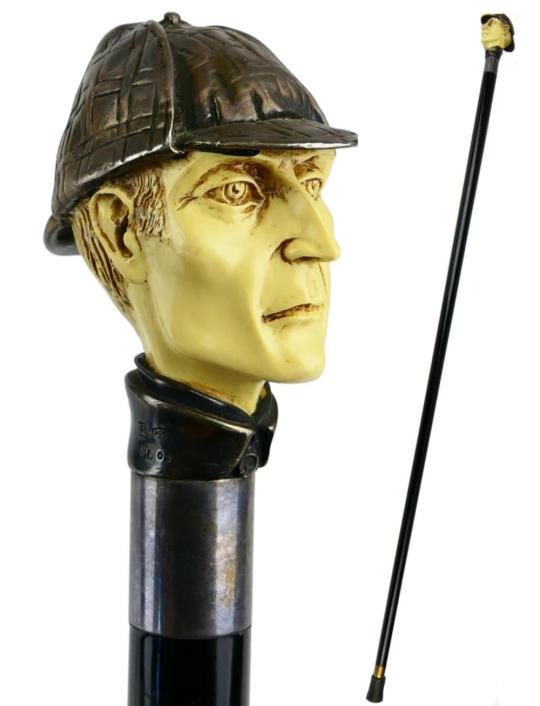


Silver, faux ivory, and beechwood Sherlock Holmes walking cane by Comoys of London
#get me one of these for Christmas so i can have joint problems in style#sherlock holmes#merchandise#sherlock holmes merchandise#walking stick#walking cane#cane#comoys#silver#beechwood#faux ivory#scrimshaw
2 notes
·
View notes
Text
youtube
https://amzn.to/4bDapL0 Hey everyone, it's Ryan from Backroad Reviews, and today I'm excited to share with you my thoughts on the Milliard Citric Acid, a 10-pound bag of 100% Pure Food Grade Non-GMO Project Verified goodness that I found on Amazon. But before we dive in, I want to give a quick shoutout to our homestead supporters – any affiliate links in this post help support our homestead at no extra cost to you.
#DazeyButterChurn#HomemadeButter#ButterMaking#ManualButterMaker#HandCrankChurner#KitchenGadget#BackroadReviews#ButterPaddles#CheeseCloth#BeechWood#OldFashionedButter#DIYButter#ButterChurnerReview#HomesteadLiving#Youtube
0 notes
Text
Types of Wood: Their Uses and Applications

Wood is one of the most versatile and widely used materials in the world, with applications ranging from construction to furniture making, art and crafts, and much more. The different wood available vary in appearance, texture, strength, durability, and other characteristics, which make them suitable for different purposes. Understanding the different wood types and their uses is essential for anyone who works with wood, whether professionally or as a hobby. In this article, we will explore some of the most popular types of wood, their unique properties, and the applications for which they are best suited. Read More: Types of Timber Used in House Construction
Types of Wood
The following are different types of wood available in the market, each catering to specific purposes. From hardwoods to softwoods, discover the perfect material to bring your projects to life with precision and beauty. 1. Hardwood Hardwood is a form of wood that originates from deciduous trees, which shed their leaves annually. This type of wood encompasses a wide range of species, each with distinct characteristics and applications. hardwood is known for its durability and aesthetic appeal, hardwood is often utilized in the construction of furniture, flooring, and various woodworking projects. Popular hardwood types are oak, maple, mahogany, and cherry, among others, each prized for its unique grain patterns and color variations. Hardwood are dense and robust nature makes it resistant to wear and tear, ensuring a longer lifespan compared to softer wood varieties. Its versatility varies to both indoor and outdoor applications, with outdoor furniture and decking benefiting from its resilience to weathering. 2. Softwood Softwood is a wood type derived from coniferous trees, which are characterized by their needle-like leaves and cones. This wood type encompasses a diverse range of tree species such as pine, spruce, fir, and cedar. Softwoods are known for their comparatively faster growth rates, making them a readily available and cost-effective option in various industries. While softer in comparison to hardwood, softwoods are valued for their versatility and suitability for a wide array of applications. Common uses include construction lumber, paper and pulp production, and the creation of wood-based products like plywood and particleboard. The light color and straight grain of many softwood species contribute to a natural aesthetic that is often sought after in both interior and exterior design. Additionally, softwoods are typically more receptive to treatments like staining and painting. Other, Detailed Types of wood are described below, 1. Akasa Wood

Akasa Wood Its types of heartwood and sapwood. Which is a straight-grained grey-brown color. It is mainly utilized in interior joinery, light structural work, flooring, utility furniture, veneer for plywood, and turnery. Akasa wood variety is general utility interior wood. Akasa Wood is a type of wood that is commonly used in traditional South Asian architecture and furniture design. It is known for its beautiful grain patterns, warm color tones, and durability, making it a popular choice for building homes, temples, and other structures in India and neighboring countries. The exact species of wood tree name that Akasa Wood comes from is not clear, but it is believed to belong to the Hardwood group of trees. 2. Ash Wood

Ash Wood Ashwood is one type of light wood and it offers distinctive luster when polished. Its structure is almost open grain and is reasonably hard-wearing. Ash Wood is a hardwood species that is native to temperate regions of Europe, Asia, and North America. It is characterized by its light-colored wood varieties with a straight, pronounced grain pattern and medium to high density. Ash Wood is prized for its versatility, durability, and shock resistance, making it a popular choice for furniture, flooring, sports equipment (such as baseball bats), and cabinetry. The wood is also valued for its ability to hold paint and stains well, giving it a long-lasting, attractive finish. Ash wood fibers could be used as a component in MDF production, either alone or in combination with other wood fibers. 3. Balsa Wood

Balsa Wood However, balsa wood is one of the softest and lightest weight timbers, it is a hardwood. Balsa is mainly used for heat, sound, and vibration insulation and for model making. Balsa Wood is a type of fast-growing hardwood that is native to Central and South America. It is known for being the lightest commercial wood in the world, with a low density and exceptional buoyancy. Due to its low weight, Balsa Wood is often used in a variety of applications, including modeling, kite building, surfboards, and packaging materials. It is also used as a core material in the construction of composite materials, where its lightness and strength make it ideal for use in lightweight structures. Despite its low weight, Balsa Wood is surprisingly strong and has a good strength-to-weight ratio, making it a versatile and popular material in many industries. 4. Bamboo Wood

Bamboo Wood It generally has a rich golden color that's very hard-wearing. As bamboo is impervious to moisture, it can be used in conjunction with the ornamental part of a water feature or for flooring in bathrooms, conservatories, and other wet areas. Bamboo Wood refers to the solid and durable culms (stems) of various species of bamboo plants, which are used as a building and construction material. Bamboo is a highly renewable resource, as it grows much faster than traditional list of hardwoods and can be harvested in as little as 3-5 years. Bamboo is often considered to be a green alternative to wood, as it is eco-friendly and has a lower carbon footprint compared to traditional hardwoods. Bamboo Wood is used in a variety of applications, including flooring, furniture, cabinetry, and even structural applications, due to its strength and durability. It is also used in the production of handicrafts and other decorative wood materials list items, as its unique grain patterns and light color tones make it a popular choice for aesthetics. 5. Beech Wood

Beech Wood Beechwood is one of the hard durable wood that is found in its natural form and comes in a variety of warm, soft honey tones. Sometimes, beech has been treated at high temperatures to create a unique red color. Beech Wood is a type of hardwood that is native to Europe and Asia. It is characterized by its reddish-brown color and distinctive straight, fine grain pattern. Beech Wood is a dense and hard wood, with a high resistance to wear and abrasion, making it a popular choice for furniture, flooring, and cabinetry. The wood is also known for its ability to hold fine details, making it ideal for use in moldings, carvings, and other decorative applications. In addition, Beech Wood is valued for its steam-bending properties, which make it a popular choice for the production of chairs, bentwood items, and other curved furniture pieces. Overall, Beech Wood is a versatile and durable hardwood that is widely used in a variety of applications. Read More: How To Remove Mold From Wood | How To Clean Mold Off Wood 6. Brazilian Mahogany Wood

Brazilian Mahogany Wood Brazilian Mahogany is a type of hardwood that is native to South America and commonly known as "genuine" or "true" mahogany. It is prized for its rich reddish-brown color, fine texture, and straight grain pattern, making it a popular choice for high-end furniture, cabinetry, flooring, and millwork. Brazilian Mahogany is known for its stability, durability, and resistance to decay, making it ideal for use in outdoor and marine applications. The wood is also favored for its workability, as it can be easily shaped, sanded, and finished to a high standard. However, due to the species' declining populations, Brazilian Mahogany has become increasingly difficult to source and is now protected by international trade laws, which limit its harvest and export. As a result, alternative species of wood that are similar in appearance and properties are often marketed as "Brazilian Mahogany." 7. Cedar Wood

Cedar Wood It is one of the major used lightweight softwood. It can be useful in construction work. Cedarwood is proven durable with straight gain. Cedar Wood refers to the softwood from various species of trees in the cedar family, which are native to the Americas and some parts of the Old World. Cedar Wood is known for its distinctive reddish-brown color and fragrant aroma, as well as its natural resistance to rot, decay, and insect damage. This makes it a popular choice for outdoor use, such as in decking, fencing, and siding, as well as for indoor use, such as in closets and chests, where it helps to protect clothing and other stored items from insects. Cedar Wood is also prized for its attractive appearance, with a fine, uniform texture and straight grain pattern, making it a popular choice for decorative uses, such as paneling and trim work. Due to its resistance to decay and insect damage, Cedar Wood is considered to be a sustainable and environmentally-friendly choice for many applications. 8. Celtis Wood Celtis wood is a straight-grained but sometimes interlocked wood. It comes up with yellowish-grey heartwood and sapwood and a fine texture with a slightly lustrous look.

Celtis Wood Celtis is a genus of deciduous trees and shrubs in the hemp family (Cannabaceae), commonly known as hackberries. These trees are found in a variety of habitats throughout the world, including temperate and tropical regions of the Americas, Europe, Asia, and Africa. Celtis Wood is known for its durability and workability, making it a popular choice for furniture, cabinetry, flooring, and other applications. The wood is typically light to medium in color, with a straight, fine grain pattern and a uniform texture. Due to its relatively low density and moderate weight, Celtis Wood is also used as a substitute for other, more expensive hardwoods in some applications. However, the wood is not widely available and is not as well known as other hardwoods, such as oak or maple, making it a less common choice for many uses. 9. Conifer Wood

Conifer Wood Wood cut out from Coniferous or cone-bearing trees is known as conifers. Generally, these trees are evergreen, the trees have needle-like leaves, and produce softwood timber. This term generally covers and includes: Read More: Difference Between Wood and Timber | What Is Wood | What Is Timber | What Is Lumber 10. Cherry Wood

Cherry Wood Cherry wood has the color reddish-brown and it comes up with straight-grained wood that may contain pith flecks and small gum pockets that create random patterning. Many people believe that cherry wood is the best wood for carving because it is soft enough to be carved easily but is also hard enough to hold its shape. Cherry wood also has a beautiful, rich color that makes it a popular choice for furniture, carvings, and other decorative items. 11. Dahoma Wood

Dahoma Wood Dahoma wood generally has coarse interlocked grain, yellowish-brown streaky heartwood, and pale sapwood. It is one of hard timber mostly for exterior use, such as exterior structural timbers, mining timbers, marine work, sleepers, outdoor furniture, decking, and so on. 12. Danta Wood

The danta wood comes up with fine grain mostly interlocked with mahogany red heartwood and lighter sapwood. It's a hard and strong wearing surface. It is mostly used for high-quality joinery, cabinetwork, benchtops, boat components, decking, and interior and exterior applications. 13. Douglas Fir Wood

Douglas Fir Wood Douglas fir wood is grown in North America and the UK. It generally has a light reddish-brown color with softwood, used for construction, interior, and exterior joinery, and plywood. It is very strong compared to weight. 14. European Beech

European Beech European Beech is generally grown in Europe and is a white to pale brown color hardwood, used for furniture, interior joinery, and flooring. It can be used for plywood. 15. Elm Wood

Elm Wood It is one of hardwood and grain similar to or even exceeding that of oak. It is found in a variety of colors and tones from cream to dark brown and its grain is equally diverse, ranging from straight to wavy. Characteristically, the elm comes up and incorporates knots and burrs. 16. Greenheart Wood

Greenheart Wood Guyana and Suriname. It is a dense, strong and durable wood that is known for its excellent resistance to rot, decay and termites, making it a popular choice for outdoor use such as marine construction, piers, and bridges. The wood is characterized by its distinctive green color that darkens to a deep brown over time when exposed to sunlight and air. Greenheart is a heavy wood, weighing between 700-800 kilograms per cubic meter and has a high resistance to shock and bending. Greenheart is also a valuable timber due to its unique properties, including its strength and durability, which make it a preferred wood for use in a variety of applications, such as flooring, decks, docks, and heavy-duty construction. Additionally, Greenheart is often sought after for its ornamental value, particularly in furniture making and cabinetry. 17. Iroko Wood

Iroko Wood Iroko wood trees mostly grew in West Africa. It has the color yellow-brown hardwood with a grain that's irregular and interlocked. Iroko wood is mostly utilized for interior and exterior joinery and for construction work. A cheaper alternative to teak. 18. Khaya Wood

Khaya Wood Khaya is a type of hardwood that is commonly known as African Mahogany and is native to the tropical rainforests of West and Central Africa. It is a prized wood species due to its beauty, strength, and stability, making it a popular choice for a wide range of applications. The wood is known for its distinctive reddish-brown color, which can range from a light pinkish-brown to a dark red-brown, and has a fine, uniform texture with a straight grain pattern. Khaya is a relatively lightweight wood, with a density of around 550 kilograms per cubic meter, and is known for its good workability, making it easy to saw, plane, and sand. Khaya is widely used in the furniture and cabinetry industries, where it is prized for its attractive appearance and durability. The wood is also commonly used for interior trim, doors, flooring, and veneers, as well as for the construction of musical instruments such as guitar and drums. Additionally, Khaya is a popular wood for outdoor use due to its resistance to rot and decay, making it a good choice for decks, pergolas, and outdoor furniture. 19. Ligneous Wood

Ligneous Wood The ligneous wood materials are bagasse, bamboo, cereal straw, and flax or hemp shives. "Ligneous" is an adjective used to describe wood-like or woody properties, but it is not a specific type of wood. The term is used to describe materials that have properties similar to wood, such as hardness, strength, and rigidity. 20. Maple Wood

Maple Wood It is generally straight-grained and is characterized by irregular patterning, which can include fiddle back and bird's eye patterns. It comes up with light brown heartwood color and thin white sapwood that can be tinged with reddish-brown. Maple wood is very strong, heavy, and has a high resistance to knocks. After being stained, it has a light, almost translucent appearance. maple is found in Canada and is one of the hardest species. Read More: How to Remove Stain from Wood (Best 9 DIY Tips & Tricks) 21. Meranti Wood

Meranti Wood This is a mixed-species grouping of the Shorea genus that's grown in South East Asia. Read the full article
#advantagesofwood#AkasaWood#alltypesofwood#AshWood#BalsaWood#BambooWood#BeechWood#bestwoodforfurnitureinindia#BrazilianmahoganyWood#CedarWood#CeltisWood#CherryWood#ConiferWood#DahomaWood#DantaWood#dentifyingwoodtypespictures#differenttypesofplywood#differenttypesofwood#differenttypesofwoodforfurniture#DouglasfirWood#ElmWood#European#EuropeanbeechWood#EuropeanWood#GreenheartWood#importanceofwood#IrokoWood#KhayaWood#kindsofwood#LigneousWood
0 notes
Text
Cole & Mason launch London mill collection

Cole & Mason launched their new London mill collection.
The new collection is art deco-inspired shaped beechwood mill, and would look lovely in any home. The launch was held at Trading House bar and restaurant - a decadent venue with tantalising food. I even got to try my hand at crafting cocktails behind the bar! 🍸
#coleandmason#saltandpepper#launchparty#mill#tradinghouselondon#homeware#beechwood#productlaunch#londonmillcollection
1 note
·
View note
Text


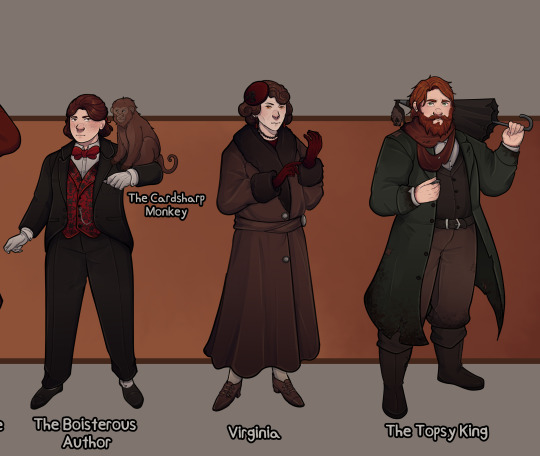
The Players Of The Last Game Of The Marvellous
So last summer I did a lineup drawing of The Light Fingers crew, so i thought it'd be fun to do another lineup this year.
This time i tackled the main characters from Heart's Desire, including my own PC in order to not have the poor monkey tiny on the ground next to everyone
#“wow this place is a freakshow i literarly dont respect any of you people” meme moment#anyway im too lazy to write on overview of my design choices this time#but if you have any thing you want an overview on feel free to ask XD#fallen london#my art#mr pages#The Bishop of St Fiacre's#the manager of the royal bethlehem#gregory beechwood#virginia#the topsy king#oc: jamie
142 notes
·
View notes
Text







Beechwood Music - Rebirth Of The Cool (2003)
#2003#2000s#03#00s#album art#album cover#album#art#beechwood music#cd#cybercore#cyber y2k#design#disc#downtempo#electronica#electronic#electronic music#future jazz#graphic art#graphic design#graphics#green#illustration#kaybug#music#super flat pop#scans#y2kcore#y2kore
53 notes
·
View notes
Text
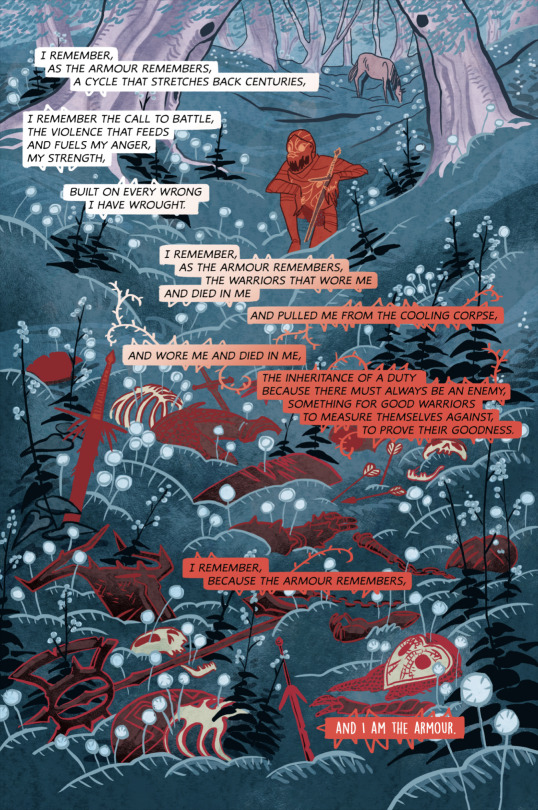
A page from THE BEECHWOOD HELM by @toadlett!
Returning home from battle through a beech forest, two knights come upon a strange figure in red armour, who challenges them to a fight to the death. Answering the challenge invites a terrible curse, which only love can break.
🐉 Available in print and PDF at quindriepress.com!
172 notes
·
View notes
Text


Fallen London through paintings: Gregory Beechwood
19 notes
·
View notes
Text
The Evolving Story of Kim Bennett, Pt. 1: Before Lewisohn
0. Mark Lewisohn’s Star Witness 1. An Introduction and Primer 2. The Evolving Story of Kim Bennett, Pt. 1: Before Lewisohn >You Are Here< 3. The Classic™ Contract Story, and Why Lewisohn Distrusts It 4. The Evolving Story of Kim Bennett, Pt. 2: Tune In 5. Lewisohn’s Other Sources 6. Lewisohn’s Portrayal of Kim Bennett & George Martin
After two posts and as many months of build-up, it’s finally time to look at Kim Bennett’s presence in Beatles history before Mark Lewisohn’s Tune In. As a refresher, Kim Bennett was a music plugger involved in a brief chapter of the Beatles' story, who Lewisohn draws on as a crucial witness to ~debunk the myth~ of how the Beatles’ first landed their recording contract with Parlophone. I’ve previously shown an example of Kim Bennett’s presence in Beatledom here, in an issue of Beatles Book Monthly, just a few pages before the name of a young Mark Lewisohn. I’ve also discussed some of the ways Lewisohn slants a story when he’s set on overturning a classic narrative – you can find that here.
Section 1: Mark Lewisohn on Kim Bennett
Part of the appeal of Mark Lewisohn’s Beatles-signing scoop is Kim Bennett’s oft-stated absence from the Beatles narrative. Lewisohn found and memorialized a man who had been marginalized from the Beatles’ story, a hero integral to their success who was erased from history due to his inconvenience to the legacy of a certain acclaimed producer. Not only has Lewisohn turned a classic narrative upside down, he’s righted the wrong done to Kim Bennett by the powers that be--or so he would have us believe. The importance of Bennett’s testimony and his exclusivity to Tune In is a crucial element of Lewisohn’s myth-building around himself and his work. Let’s take a look at a few examples:
In a 2014 interview with Dierdre Kelly, Lewisohn calls his revised version of the Beatles’ recording contract “probably one of the biggest things in the book.” As for how he came to that version of events, Lewisohn says, “It all fell into place when I met a man called Kim Bennett…without whose incredibly tenacious efforts—and he was never named in any book—we would never have heard of the Beatles. He literally was the story’s hero and he tells us a very different story.” [Emphasis mine]
From Allan Kozinn’s 2013 interview with Lewisohn, we get the following exchange:

Kozinn describes Bennett as “someone who had never been interviewed,” and Lewisohn not only doesn’t correct him, he furthers that idea by saying Bennett “had been trying for years to get people to listen to his story…and nobody wanted to know.”
As a final example, we’ll return to the episode of Nothing Is Real (season 7, ep. 7) that I excerpted in my first post on Bennett.
A partial transcript [emphasis mine]:
“I approached him, and he was so happy that I got in touch with him because he knew the true story of how the Beatles came to be signed to EMI and he knew that it was his efforts that had made the difference, and without him, it wouldn’t have happened. The Beatles possibly may never have happened without Kim Bennett, and he’d been trying to tell people for years, and people didn’t want to know.”
“He was a very frustrated man because no one had ever paid him the attention that he felt was his due.”
“…and if I hadn’t of got to him when we did, we wouldn’t know him, and we would always have that bizarre gap of how they got signed by someone who never met them.”
Again and again, Lewisohn tells us that Kim Bennett had been trying desperately for years to gain recognition for his action, and everyone ignored him--everyone but Mark Lewisohn. This is decidedly untrue. He has been mentioned in multiple Beatles publications by major names in Beatles history, which you can find in Section 3. But first!
Section 2: Biographical & Background Info
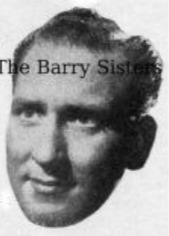
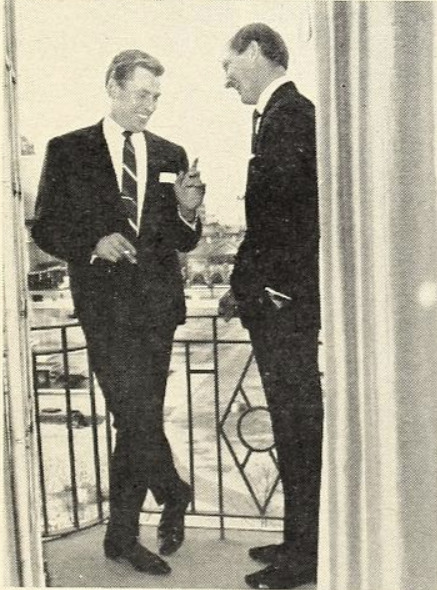
Here he is, the man of the hour, Kim Bennett - and I bet you thought that was the Barry Sisters! On the left, we see Kim Bennett's floating head from his days as a singer, and on the right, we see him fraternizing with Russ Conway circa 1967 - Bennett is in profile on the right. I've dug up some biographical information on the enigmatic Kim Bennett, and I wanted to share it here along with a little context about music publishing to make the accounts shared in the next section make mroe sense. If you're confident in your early-1960s music industry knowledge and know who Kim Bennett and Sid Colman are, scroll right along to Section 3.
I've cited Lewisohn a few times in this section when other sources weren't available. Every time I cite him, I put a quarter in the "Risky Citations" jar - once I've filled it a few hundred times, I'll take it to CoinStar and use the money to buy a copy of Fifty Years Adrift.
The Parlophone Contract Story is a story with many bit parts, most of whom won't appear until my next post--there will even be a figure! I'll assume you know the Beatles, Brian Epstein, and George Martin, the man who would become the Beatles' main producer. In the parlance of the times, George Martin was the A&R man (artistes and repertoire) of EMI's Parlophone label. As the A&R man at Parlophone, George M. has the head of the label, with duties including scouting artists, matching his stable of artists with songs, and overseeing the recording process.
Alongside record labels like Parlophone, Columbia, and HMV, EMI had other companies under its corporate umbrella. One of these companies was the music publisher, Ardmore & Beechwood (A&B).
Music publishers manage song copyrights; they make money by marketing and disseminating those songs. In the early 20th century, the big moneymaker for music publishers was sheet music sales. By the 1950s and 60s a sea change was in progress as record sales grew and eventually eclipsed the sale of sheet music. Just as the medium through which songs were sold changed, so did the way in which music publishers sold those songs: originally, song pluggers from publishing companies would pitch their songs to orchestras, brass bands, and dance halls, seeking out groups who performed live music, so that their audiences would go out and buy sheet music of the songs they’d heard (Southall & Perry 2006, p.ix-xii). With the rise of records, song pluggers would pitch their songs directly to A&R men; they would visit the A&R men in their office and sing the songs they had on offer, accompanying themselves on the piano while they did (Martin & Hornsby 1979, p.48). They could then market those records to sell their songs. If a song was recorded by multiple artists, as was often the case, the song publisher benefited regardless of which version of a song played. This set their interests slightly apart from record producers, who only benefited if their version of a song sold.
Let's illustrate with a Lennon-McCartney original: the music publisher for Lennon-McCartney's music, Northern Songs, would profit from both the Rolling Stones version of 'I Wanna Be Your Man' and the Beatles version, but the record companies would only benefit from the version they released - the Stones version meant money in Decca's pocket, while the Beatles version benefited EMI.
(I'm sure their are some additional business/contract complexities that come into play, but I believe the general principle is correct)
EMI Music Publishing would one day be a Big Fucking Deal, but when the Beatles joined in 1962, it didn't exist yet. Publishing was a minor interest for the company, and they had only a small publishing presence in the form of A&B, which opened in 1958 (Martland 1997, p.262). A&B was set up to handle the publishing interests of two American companies, Ardmore Music Corp. and Beechwood Music Corp., both of which were owned by Capitol Records (Cash Box 1958 Jul 26, p.34). Capitol Records had been purchased by EMI in 1955 (Southall 2009, p.25), and A&B was set up a few years later to handle their catalogue in the U.K., while also providing and option to publish through EMI for any interested songwriters. This was done at the behest of EMI Chairman Sir Joseph Lockwood (Southall 2006, p.9-10).
From its genesis, veteran music publisher Sid Colman (1905-65) served as general manager of Ardmore & Beechwood (Cash Box 1958 Jul 26, p.34). He would serve in this role until his untimely death in April 1965 (Cash Box 1965 Apr 24, p.47). You will encounter multiple spellings of his name, but Lewisohn assures us that Sid Colman (rather than Syd Coleman) is correct (2013, p.856). Kim Bennett served as his assistant and music plugger.
Born Thomas Whippey (1931-2004) (Lewisohn 2013), he became a Decca recording artist in 1954 under the name Kim Bennett. He recorded six singles, none of which charted. I haven’t found any of his work online, but for an idea of the type of music he released, here are other versions of two songs he put out: ‘Softly, Softly’ by Ruby Murray and ‘The Kentuckian Song’ by Eddy Arnold. He maintained a day job as an office worker until 1955, then briefly worked as a musician full time. He worked a season at Butlin’s (not the same location as Ringo), played some clubs, and toured with the Ambrose orchestra, but his career as a singer had petered out by late 1956. As Don Wicks puts it “[h]e was a victim of the growing rock and roll industry no longer interested in a soft pleasant vocal style.” (Wicks 1996 pt.1)
He resumed work at a toy warehouse, (Wicks 1996 pt.1) but later took a job in music publishing with B. Feldman & Co. Ltd. (Cash Box 1967 Jul 22 p.65). He began work with Ardmore & Beechwood no sooner than August 1958. He was still with Ardmore & Beechwood as of June 1965 (Cash Box 1965 Jun 5 p.55). By July 1967, he had moved to South Africa, where he ran a newly launched publishing company, Francis Day (S.A.) (Pty), which was established to manage copyrights of B. Feldman & Co. Ltd., Francis Day & Hunter, and Robbins (Cash Box 1967 Jul 22 p.65).
According to Lewisohn, Bennett spent his later years in Shropshire in “quite humble circumstances (Nothing Is Real, Season 7 Ep. 7, 29:30). He was interviewed by Lewisohn on July 27-28, 2003 (Lewisohn 2013 p.869). He died in 2004.
While biographical information on Bennett between 1967 and 2003 is slim (perhaps nonexistent), his role in the Beatles story received several mentions in print in those intervening decades.
Section 3: Kim Bennett in Beatles History
As I highlighted in my first post in this series, Kim Bennett was quoted in Beatles Book Monthly Issue 70, but that isn't his earliest appearance in the Beatles lore - he first appears in an earlier issue of BBM, issue 13, published in Augst 1964, p.22-3. He's mentioned by BBC DJ Ted King in relation to his work plugging 'Love Me Do'.
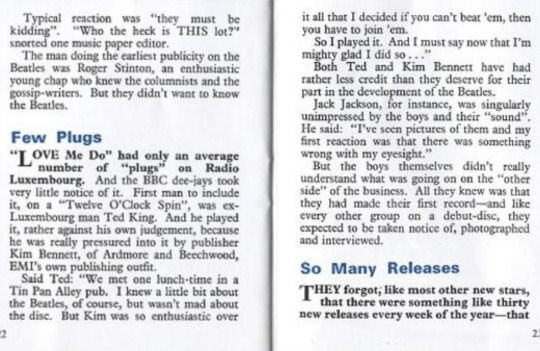
To summarize: Kim Bennett went to lunch with Ted King and pitched “Love Me Do” to him. King wasn’t fond of the record, but Bennett’s enthusiasm convinced King to play it on “Twelve O’Clock Spin.”
Our next Bennett sighting (and the first to use Bennett as a source) is the aforementioned BBM Issue 70, p.8, published May 1969.

This is part of a piece titled “When did you Switch On?” whose author is unattributed. Whoever they are spoke to Kim Bennett directly. Here’s what we can gather from this piece:
Kim Bennett was Sid Colman’s assistant
Colman “had quite a job to persuade George Martin to see the Beatles”
Bennett, presumably, was in the room when Colman “first heard the Beatles’ tapes”, since Bennett is able to relate what Sid Colman said on the matter
Colman decided to call Martin because he did not have a similar-sounding pop group, while the other EMI A&R men did
Bennett next crops up in several of Bill Harry's books, starting in 1982. Bill Harry is the founder of Mersey Beat and was an art school chum of John and Stu's; he's written a number of reference books about the Beatles, including The Beatles Encyclopedia, The John Lennon Encyclopedia, and The Book of Beatle Lists, among many others. Four of his books mention Bennett. The information in these books seems to be pulled from the two BBM articles highlighted above - with the possible exception of the last one. The books where Bennett is mentioned include:
The Beatles Who’s Who (1982): An encyclopedia of Beatle people. Bennett does not get his own entry, but he is mentioned in the entry on Sid Colman (p.84). Bennett is said to be Colman’s assistant, and his involvement in “Love Me Do” promotions is noted without detail.
The Ultimate Beatles Encyclopedia (1992): Bennett now gets his own entry (p.84-5). Again, this appears to draw from the Beatles Book articles. More detail is included here than in The Beatles Who’s Who. Bennett is mentioned again in Sid Colman’s entry (p.168). There’s a reference to Colman and Bennett liking the demos for “Love of the Loved” and “Hello Little Girl”, which is not mentioned in BBM above. However, these songs were referenced in relation to Sid Colman in The Beatles Who’s Who, so I think Bennett is just lumped in with Colman here.
Also in the Colman entry, Harry points out two conflicting accounts of the promotion of “Love Me Do.” George Martin wrote in his memoir that Ardmore & Beechwood did “virtually nothing” to promote the song, but Ted King, in BBM Issue 13, said it was Kim Bennett who got him to play the song on “Twelve O’Clock Spin.” This apparent contradiction will be discussed in detail when we deal with Tune In’s version of events, but for now, I’ll say this: it can be true that Kim Bennett did his best to promote 'Love Me Do' and acheived limited success while still falling short of the expectations of George Martin (and, crucially, Brian Epstein).
The Encyclopedia of Beatles People (1997): Bennett has a brief entry (p.45) and is mentioned in Sid Colman’s entry (p.92-93.) The Sid Colman entry includes this quote from Sir Joseph Lockwood about the Beatles’ publishing rights “I don’t blame Sid Coleman [sic], because he published the first two songs without a contract. He wasn’t getting any support from either the record producers or the solicitors.” This quote appears in Ray Coleman’s The Man Who Made The Beatles (1989), seemingly from an interview conducted by Coleman while researching that book.
The Ultimate Beatles Encyclopedia (Revised & Updated, 2001): The entry for Kim Bennett includes the entirety of the entry in the 1992 version with an additional two paragraphs (p.135-6). These paragraphs are emotionally charged and add information not available in the two articles from BBM. After detailing Bennett's involvement in 'Love Me Do' promo, Bill Harry writes,
“It’s ironic that the two people who were so enthusiastic about the Beatles and helped to get them with EMI in the first place were to have George Martin shut the door in their face by suggesting to Brian Epstein that he see Dick James about being their publisher. For one thing, it was Coleman [sic] who, after talking to Brian realized that the only A&R man at EMI who hadn’t rejected the Beatles was George Martin. Apparently, Coleman had a hard job persuading Martin to see Epstein. Even then, Martin wasn’t initially impressed by their sound. He only agreed to a test session at EMI’s No. 3 studio four weeks later, then another three months elapsed before the release of their first single. EMI and Martin weren’t even confident enough to give the Beatles a plug rating. Artists such as Cliff Richard received an ‘A’ plug on EMI’s Radio Luxembourg shows. The lowest was ‘B2’. The Beatles weren’t even given this low plug, EMI gave ‘Love Me Do’ a nil rating. “So Bennett had a hard job pushing the record without EMI using their clout. As a result, Epstein refused Ardmore & Beechwood the future Beatles publishing. Had he done so, the Beatles might have retained the rights to their own songs, and Coleman might have received some acknowledgment for having placed the Beatles into his hands in the first place.”
It’s hard to say whether or not additional information from Kim Bennett made it into this article. Much of this could be pulled from other sources and presented through a negative lens stemming from Dick James’ involvement in the Northern Songs debacle. There are, however, two elements here that are consistent with Bennett’s later accounts that might suggest that he spoke with Bill Harry: (1) the phrasing that George Martin “shut the door” in the face of A&B, rather than Brian Epstein actively seeking out a different publisher and going to George for advice, and (2) the blame placed on George Martin for the Beatles low plug rating. Both new elements, and both inconsistent with certain other versions of events.
In Philip Norman's revised Shout! (2003), there is unambiguous evidence of Kim Bennett's participation.
In the original 1981 release, Sid Colman and A&B are mentioned, but not Bennett; in the revised edition, not only is Kim Bennett present, but the information surrounding him is clearly more than the familiar, regurgitated tale found in Beatles Book Monthly.
Norman doesn’t give citations, so I can’t say conclusively how he got this new information. There may be an interview with Kim Bennett published somewhere that I haven’t come across, though I’m inclined to believe either Norman or one of his research assistants spoke to Kim Bennett directly. The phrase “According to Bennett” appears a few times in Shout! (2003), which reads as if the information is coming directly from the horse’s mouth, so to speak.
Since the revised edition was published in the same year as Lewisohn’s interview with Kim Bennett, I considered that Lewisohn might have shared his information with Norman, and Norman may have rushed an edit. I looked for the exact publication date for the revised edition of Shout!—it was weirdly hard to find—and that put to bed any ideas of Norman cribbing off of Lewisohn’s notes: Pan Macmillan Australia gives the release date as January 9, 2003, several months before Lewisohn interviewed Bennett.
The Contract Story, as presented in the revised Shout! starts in the usual way: Brian gets an acetate made from the Beatles’ demo tape, the technician likes it and puts Brian in touch with Sid Colman, who works for A&B upstairs. Colman is interested in publishing the original Lennon-McCartney numbers. Then Kim Bennett enters the picture (Norman 2003, p.164-5):


Bennett likes the disc, too, and suggests they record the Beatles independently in the for-hire studio below their Oxford Street office. Colman takes Bennett’s idea to Len Wood, managing director at EMI, but it goes against protocol, and Wood won’t allow it. Only then does Colman put Brian in touch with George Martin. Colman and Brian have a “gentlemen’s agreement” that A&B will get the Lennon-McCartney publishing rights if they get a contract with George M.
It’s a short passage, but there are already a few problems here. First, the timeline doesn’t make sense. Most early accounts have Brian’s meeting with George M. occurring the day after Sid Colman hears the tapes (see A Cellarful of Noise, The Beatles (1968), and All You Need Is Ears). The largest gap is given by Lewisohn’s Chronicle (p.53-55), in which Epstein is said to have met Colman “around February 8” (a Thursday), with the Epstein-Martin meeting occurring on Tuesday, February 13. The Epstein-Martin meeting date seems to be pulled from George Martin’s date book (he has a meeting with a “Bernard Epstein” on that date), but I’m unsure what brought Lewisohn to the February 8 conclusion. Based on other information in the Chronicle, my best guess is either a meeting between Colman and Martin on February 9th, or a letter sent to Decca by Epstein on February 10th stating he had secured a recording contract. Whether or not he had met with Colman, Epstein certainly hadn’t secured a recording contract on that date – it was purely bluster, a kiss-off to Decca.
Regardless, even if Epstein met Colman on February 8th rather than February 12th, that’s a narrow window of time for Bennett’s story to occur. Rather than trying to place the group with an A&R man at EMI, Colman does nothing until his assistant suggests they record the Beatles themselves. This is unorthodox. A large part of the job of music publishers, as I’ve said above, is to pitch songs to A&R men to get them recorded. In this case, they’d be pitching a group along with the songs, but it seems strange that they wouldn’t try to work their contacts at all before making the jump to DIY. Still, let’s assume that happens. Colman takes the idea to Len Wood. Len Wood’s office at the time was probably at EMI House in Manchester Square, which isn’t far from A&B’s Oxford Street location, so assuming Len Wood had an open schedule, and Colman felt a high enough degree of urgency to immediately take Bennett’s idea to the managing director, I suppose it’s possible that Colman took Bennett’s idea to Wood, was immediately shut down, and then called Epstein back in to set up a meeting with George Martin if we assume Epstein’s first meeting with Colman happened on the 8th rather than the 11th. Still, it seems odd to me that these events wouldn’t turn up in Epstein’s account – getting shut down by the managing director of EMI Records is sort of a big deal, and would add to the drama of the everyone-rejected-them-but-George-Martin-story.
The other big issue here is that this version of events contradicts Bennett’s account from 1969. Rather than simply overhearing Colman’s conversation with Epstein and subsequent persuasion of George Martin, Bennett now has a more active, central role. He’s not driving the story, but he now gives a version of events in which he’s one of the Beatles’ earliest champions. I don’t think it’s unfair to consider that Bennett’s increased involvement in the story might indicate an interest in being more than a footnote in Beatles’ history.
Bennett is mentioned again during the promotions of ‘Love Me Do’ (p.182-3):


Bennett secures some airtime on Two-Way Family Favourites by “repeatedly nagging a radio producer friend.” This is not the same radio show mentioned in Beatles Book Monthly Issue 13 (above), but it’s in keeping with Bennett’s role as a plugger—and that’s where Bennett’s involvement ends in Shout! (2003). There’s one more tantalizing mention of Brian’s “gentlemen’s agreement” with Colman, which he breaks due to his dissatisfaction with A&B, turning to George Martin for publishing advice.
There you have it: Kim Bennett’s evolving story pre-Tune In. It starts as a bit of extra detail that fits inside the greater framework of the Beatles’ Contract Saga, and, after thirty years, morphs into something that contradicts Bennett’s earlier version and the many other accounts of the same events. Things will get even stickier once we get to Tune In. But first...
Section 4: Why Does It Matter?
I can think of three explanations for why Lewisohn pitched Bennett as an unheard witness when he had, in fact, gone on the record before, and none of these explanations helps the credibility of the story.
Explanation 1: Neither Lewisohn nor Bennett knew about Bennett’s previous statements on the matter. This would be extremely damning for Bennett’s reliability, as it would mean he had forgotten both his 1960s statement to Beatles Book Monthly (plausible) as well as the interview that led to the information included in Shout! (concerning). This scenario also requires Lewisohn to be unaware of the above Bennett appearances, which doesn’t reflect well on his abilities as a researcher. If you find someone who you think has never been on record, you might want to at least look him up in the glossary of books by major Beatle authors.
Explanation 2: Bennett knew; Lewisohn didn’t. Perhaps Kim Bennett either neglected to inform Lewisohn of his past interviews, or outright lied to him on the matter. Lewisohn says that Bennett is “known for a dogged persistency” (Lewisohn 2013, p.571), has said that Bennett “just picks something up and he will not let it go,” (Let It Roll 2020, ~25:50), that he is “very insistent about things” and by the time Lewisohn interviewed him, “was a very frustrated man because no one had ever paid him the attention that he felt was his due.” (Nothing Is Real S7Ep7) Could this tenacity and feeling of entitlement to a part of the Beatles’ legacy have led Bennett to present himself as a bigger scoop than he really was? Might he have sold Lewisohn a tale of exclusivity and, perhaps, a version of the Contract Story more salacious and headline-grabbing than the truth?
Again, this explanation also hinges on the idea that Lewisohn was in the dark about Bennett’s prior interview(s), which is a huge oversight, but not as damning as explanation 3.
Explanation 3: Lewisohn knew and lied. Whether Bennett told Lewisohn outright that he had been interviewed in the past or if Lewisohn came upon that information in his research, Lewisohn chose to portray his interview with Bennett as exclusive. Perhaps this was purely to make his “scoop” seem juicier. Perhaps he was reluctant to give Philip Norman credit for finding Bennett first – there seems to be no love lost between Lewisohn and his former employer. Or perhaps Lewisohn knew that Bennett’s prior accounts made the story told in Tune In less credible. The early anecdote related in BBM already conflicted with the revised version in Shout! – if Bennett’s account, as related in Tune In, presented further inconsistencies, it would undermine Lewisohn’s major finding.
I’ll close with a segment from one of the better Lewisohn interviews I’ve heard. It’s from Ken Michaels’ radio show ‘Every Little Thing’, conducted in ~2013, and it’s one of the rare instances where an interviewer gives Lewisohn any pushback or asks follow-up questions regarding some of his more explosive claims. It’s an uncomfortable listen – Ken Michaels even appeared in the comments of this YouTube channel to counter claims that he has beef with Lewisohn– but satisfying to hear some meaningful questions when so many people are content to simply deify Lewisohn. Here's the relevant exchange:
youtube
KM: Aren’t there also problems with certain people that you’ve interviewed that have played some part in Beatle history that want to really elevate their status?
ML: Oh yeah, oh yeah, and it’s up to authors to ensure that they don’t get what they want. And there are unfortunately too many authors who just very happily take the stuff they’re given without challenging it. You’ve got to challenge all these things. And unless something completely fits into the framework of the story, you can’t use it.
Next time, on Days of Our Lies: the Classic Version of the Contract Story, and why Mark Lewisohn is so intent on debunking it. After that, we’ll finally look at the Contract Story as portrayed in Tune In.
Sources:
Cockcroft S, Carty J. 2023 Feb 14 [conducted 2023 Jan]. Nothing Is Real – Season 7 Episode 7 – Mark Lewisohn Returns [podcast, season 7, episode 7]. Nothing Is Real. 1:17:15. Available from: https://open.spotify.com/episode/5mtbNIreAY0Car6VASuZGV?si=b1e322e001a347e3
Coleman R. 1989. The Man Who Made the Beatles: An Intimate Biography of Brian Epstein. New York (NY): McGraw-Hill Publishing Company. 400p. Accessed online 2024 Mar 19. Available from: https://archive.org/details/manwhomadebeatle00cole/mode/2up
Kelly D. 2014 Jul 30. Setting the Record Straight: Interview with Beatles biographer Mark Lewisohn. Critics at Large. Accessed 2024 Mar 4. Available online: https://www.criticsatlarge.ca/2014/07/setting-record-straight-interview-with.html
Kozinn A. 2013 Dec 27. Tune In, and Turn On the Reading Light. ArtsBeat: New York Times Blog [accessed 2024 Feb 6]. Available from: https://archive.nytimes.com/artsbeat.blogs.nytimes.com/2013/12/27/tune-in-and-turn-on-the-reading-light/?_r=0
Lewisohn M. 1992. The Complete Beatles Chronicle. New York(NY): Barnes & Noble Books. 365p. Accessed online 2024 Mar 14. Available from: https://archive.org/details/completebeatlesc0000lewi/mode/2up
Lewisohn M. 2013. 1st U.S. Edition. The Beatles: All These Years Vol. 1: Tune In. New York (NY): Crown Archetype. 932p.
Lichtman I [editor]. 1965 Apr 24. Great Britain. Cash Box XXVI(40); International Section p.45. Accessed online 2024 Mar 18. Available from: https://archive.org/details/cashbox26unse_31/page/44/mode/2up
Lichtman I [editor]. 1965 Jun 5. Great Britain. Cash Box Vol.XXVI(46); International Section p.55. Accessed online 2024 Mar 13. Available from: https://archive.org/details/cashbox26unse_37/mode/2up
Lichtman I [editor]. 1965 Jul 24. Great Britain. Cash Box Vol. XXVI(53); International Section p.53. Accessed online 2024 Mar 13. Available from: https://archive.org/details/cashbox27unse/mode/2up
Lichtman I [editor]. 1967 Jul 22. Overlooking South Africa. Cash Box Vol.XXVIII(52); International Section p.65. Accessed online 2024 Mar 13. Available from: https://archive.org/details/cashbox28unse_50/mode/2up
Martin G, Hornsby J. 1979. All You Need is Ears. New York (NY): St. Martin’s Griffin. 293p.
Martland P. 1997. Since Records Began: EMI: The first 100 years. London: B.T. Batsford Ltd. 359p. Accessed online 2024 Mar 17. Available from: https://archive.org/details/sincerecordsbega0000mart/mode/2up
Michaels K. 2013. Mark Lewisohn interview [radio broadcast episode]. The Beatles – Every Little Thing. Originally aired on XM Radio. 1:53:18. Available from: https://www.youtube.com/watch?v=CjAUtngSoKc
Parnes S [editor]. 1958 Jul 26. Ardmore & Beechwood Open London Office. Cash Box Vol. XIX(45); p.34. Accessed online 2024 Mar 18. Available from: https://archive.org/details/cashbox19unse_43/page/34/mode/2up
Southall B, Perry R. 2006. Northern Songs: The True Story of The Beatles Song Publishing Empire. London: Omnibus Press. 218p. Accessed online 2024 Mar 13. Available from: https://archive.org/details/northernsongstru0000sout/mode/2up
*Wicks D. 1998. Updated 2012. The Ballad Years: From the Bombs to the Beatles: a Directory and Discography of British Popular Music-makers from 1945-1960. Accessed online 2024 Mar. Available from: https://archive.org/details/theballadyears/Book%20Contents/
Wilcox N. 2020 Apr 27. How The Beatles Got Signed [podcast, season 7]. Let It Roll. 57:21. Available from: https://dcs.megaphone.fm/PAN2878353172.mp3?key=5204cb23c38410bae94e208461239e2d&request_event_id=e800ecea-9c5e-40f2-90e3-dad820306501
Images from The Ballad Years and Cash Box 1967 Jul 22
*The Ballad Years by Don Wicks was originally published circa 1998 (by a company called In Tune International, of all things!) There is some great contextual info included at the Internet Archive link; to condense it here, after the original print run of the book, Don Wick continued to update the book, primarily to reflect the death of artists. He distributed these via Microsoft Word Document, and the 2012 version of these documents was uploaded to the Internet Archive. I believe that is the reason for “The Barry Sisters” being plastered across Kim Bennett’s face – the pages including artists’ pictures have very wonky formatting.
#mark lewisohn#the beatles#tune in#kim bennett#sid colman#ardmore & beechwood#it's TOO LONG but what can ya do#bless you if you read this whole thing
36 notes
·
View notes
Text
one of the things ive been enjoying recently is allowing myself to focus on the obsessions - like going through a patch where i listened exclusively to abba, then it switched to carpenters, and reading about them and stuff. rather than trying to be moderate to a degree, and listen to other music when i really wanted to listen to these things, i was allowing myself to listen to them.
but it's like... i've stopped caring. about anything. i'm listening to carpenters right now, the 250-song playlist i made by listening through their entire discography and adding the songs i liked. it's very pleasant, but it's... not making me happy, i don't know. i'm just ambivalent. who the hell cares. about anything.
#im not even sleep deprived im just. Empty. Numb. whatever.#every scrap of enjoyment has leeched from the world somehow and i didn't even notice it go#this is literally one of my favourite songs playing rn! (beechwood 4-5789)#and yet Who The Hell Cares#didn't write anything yesterday except a weird tiny excerpt about vaniah that doesn't freaking make sense#feeling too Flat to work on inklings idk. it needs some feelings. some humanness. some earnestness#and i have none of that.#watch it languish forever and never get done! like every other useless project i try and do!#i am such a failure.
10 notes
·
View notes
Text




#beautiful day for a walk today#sunny autumn days#autumn#woodland#beechwoods#landscapes#photos: mine
47 notes
·
View notes
Text
youtube
https://amzn.to/3SLFXG2 Hey there, Ryan here from Backroad Reviews! Today, I'm excited to share our latest video review featuring a unique kitchen gadget that takes us back to simpler times – the Dazey Butter Churn. This manual butter maker promises to transform the way you think about butter, and we put it to the test to see if it lives up to the hype.
#DazeyButterChurn#HomemadeButter#ButterMaking#ManualButterMaker#HandCrankChurner#KitchenGadget#BackroadReviews#ButterPaddles#CheeseCloth#BeechWood#OldFashionedButter#DIYButter#ButterChurnerReview#HomesteadLiving#Youtube
0 notes
Text






My boys, I miss them
106 notes
·
View notes